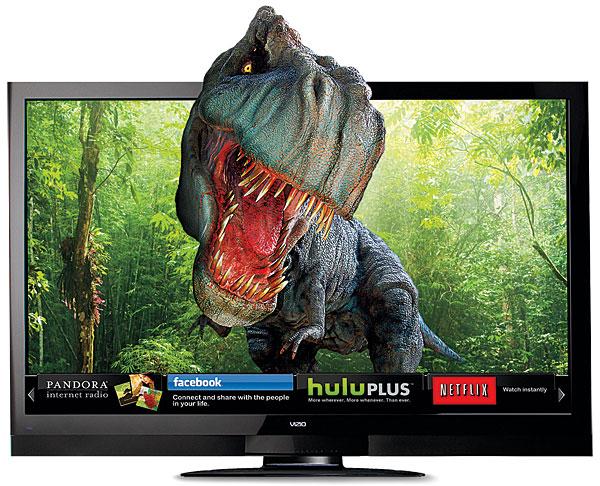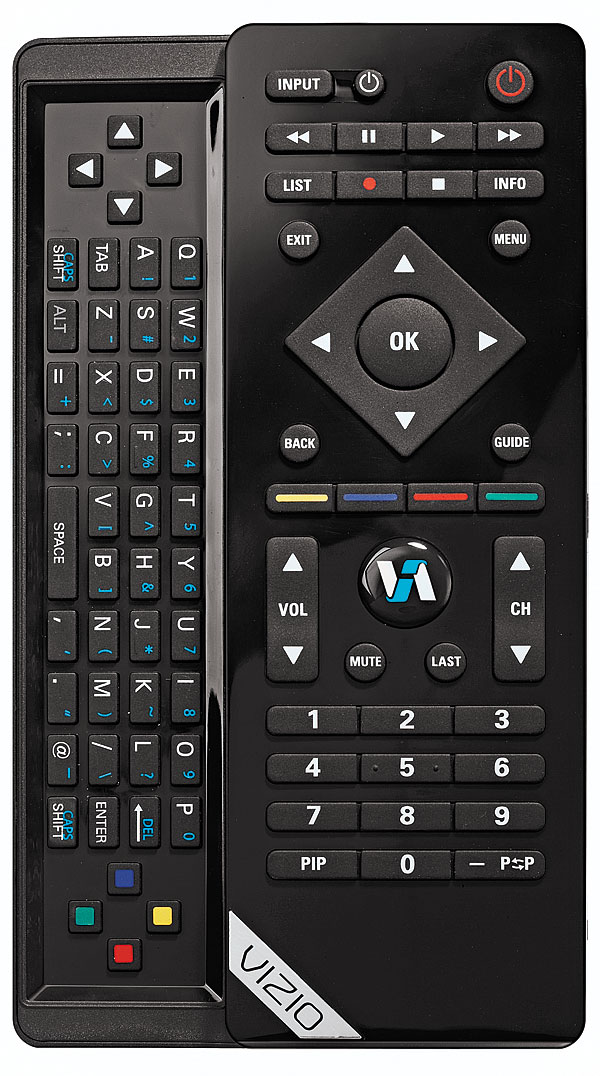Vizio XVT3D650SV 3D LED LCD HDTV

Vizio steps up with the first passive 3DTV, but will the world take it sitting down?
Since the advent of 3D for the home, the specter of pricey active shutter glasses that cost as much as $150 each has hung over the technology like a dark cloud. Many potential buyers are put off by the prospect of buying enough glasses to outfit the whole family, not to mention the houseful of friends who’ve come over to watch Hoodwinked Too! Hood vs. Evil in 3D. (Yes, Virginia, there is a Hoodwinked! sequel in the pipeline. Not many remember that the computer-animated Hoodwinked! was produced in 3D, probably because not many remember Hoodwinked! at all.)
We’re betting that glasses-free 3DTV will become a commercially viable product sometime around 2025. Aside from waiting for that vaporware, there has so far been no other alternative to active shutter glasses for 3D HDTV at home. But now there is: passive glasses—the same kind that most theatrical 3D presentations use. For the time being at least, sets that use these passive glasses are limited to Vizio (whose first passive 3DTV is the subject of this report), Toshiba, and LG. Incidentally, LG developed the technology; both Vizio and Toshiba have licensed it for their sets.
Features
The XVT3D650SV is Vizio’s first entry in the 3D-at-home mara-
thon, and it has the distinction of being the first passive 3DTV to reach market. It is the company’s current top-of-the-line offering. It’s also the priciest set yet for
this company, which built its reputation on warehouse-store value. If it’s too rich for your blood, smaller passive 3D designs from Vizio are in the works
and may even be available by the time you read this. Still, you shouldn’t assume that the observations here apply to any other specific model (a caveat that applies to any review).
At 2.25 inches deep (without its stand), the XVT3D650SV is thin enough for stylish, on-wall use but not quite ultra svelte by today’s standards. The set comes in basic black, and whether it’s turned on or off, you’ll find that the screen is highly reflective. This could be a problem in brightly lit rooms.
The input complement, spread out over back- and side-facing panels, is more than generous to all but S-video die-hards and those who need more than a single (shared) component/composite input. There are five HDMI jacks, an Ethernet port for connection to your home net- work, a VGA terminal for a PC, and three USB ports (currently specified for service only).
A jag wheel on the side of the chassis turns the set on and off, selects inputs or onboard tuner, and adjusts the volume. The full-function remote control operates in either IR or Bluetooth and includes a small slide-out keyboard for use with the set’s Internet apps. It conveniently controls the volume for cable and satellite set-top boxes and A/V receivers. Its main shortcoming is its lack of backlighting.

Vizio continues to produce the best owner’s manuals in the business. They’re clear and uncluttered, with precise (though necessarily brief) explanations of the basic video controls. The only thing I’d like to see added is a good index.
You can adjust the nine preset Picture Modes individually for each input. Among them are different modes for different sports (Football, Golf, Basket- ball, and Baseball), which is an ongoing Vizio thing that still mystifies me. I used the Custom mode.
The user menu has three Color Temperature settings (I chose Normal), plus Gain (high) and Offset (low) calibration controls for red, green, and blue. You can adjust these separately for each Picture Mode. A multi-position Color Enhancement feature produced subtle changes. For me, it didn’t result in any improvements, so I left it off. There’s no color management system (CMS) to adjust saturation, hue, and brightness of the primary or secondary colors.
A Smooth Motion control in the Advanced Picture menu employs a Motion Estimation/Motion Compensation (ME/MC) algorithm (i.e., frame interpolation) at the set’s refresh rate of 120 hertz. The Vizio interpolates the extra frames required to bring the source’s frame rate up to 120 Hz when Smooth Motion is on; it simply repeats frames when it’s off.




























































